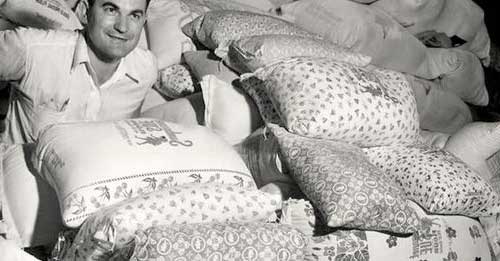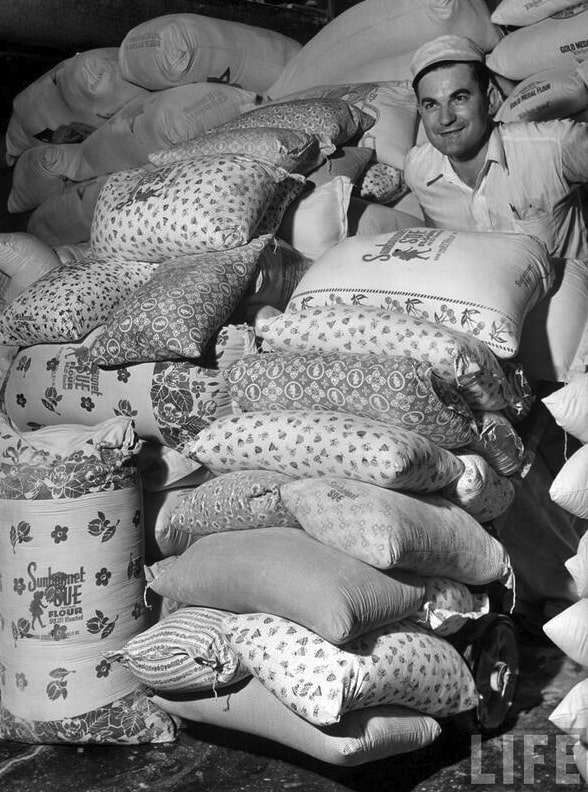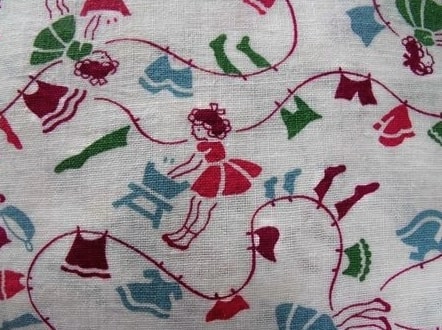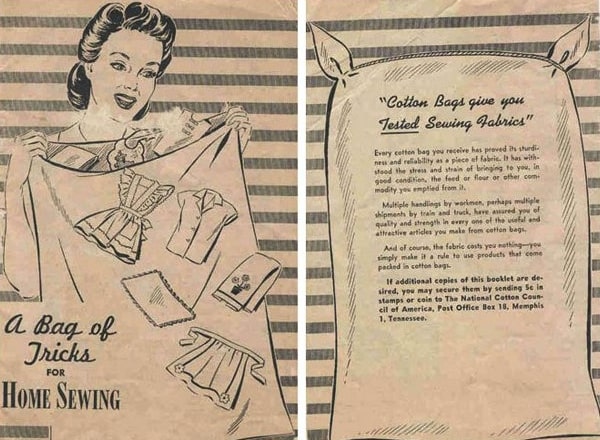During the Great Depression, times were tough, so scrimping and conserving—as well as repurposing everything possible—were the norm.
People nowadays still enjoy saving money and reducing waste via innovative DIY projects, such as transforming used tires into elegant ottomans. But “doing it yourself” wasn’t a fad back then; it was a necessity.
If women desired to provide for their families during those terrible times, they had to be inventive, particularly when it came to apparel.
That’s when the ladies saw that one of their basic foods, flour, was packaged in cotton bags. They were resourceful and desperate, often emptying the bags and using the fabric to construct clothes for their kids.
However, when flour sack makers became aware of the trend, they chose to rethink the way their flour was packaged—and the results are beautiful!
Have you ever worn a flour sack dress, or has someone you know done so? Please let us know in the comments section below.
When flour makers saw that women were repurposing their flour sacks into apparel, diapers, dishcloths, and other items, they began storing their flour in attractive designs. Families during difficult times greatly appreciated this.
The bags had vivid, colorful motifs and occasionally patterns for toys, as shown below, which were packed with flour for delivery. Although the bags were labeled, the ink was washable.
Flour sack apparel was particularly widespread due to the poor finances of struggling families; hence, many distinctive patterns were printed on the sacks.
The patterns were available in a range of colors and designs. Everyone could find something they liked!
3.5 million women and children are believed to have worn garments and used things manufactured from flour sacks during the Great Depression.
It may seem unusual to consider wearing a flour sack today, but owing to the severity of the Depression, it was a way of life for millions.
They may as well have appeared lovely if they had to wear flour sacks.
The fashions of the patterns varied as makers attempted to create something attractive to individuals of different ages and interests.
Many of them were lovely, and today’s fabric designers still use many of the same designs.
The bags also came with instructions on how to remove the company’s printed logo’s ink.
There were also guides on how to transform the bags into other useful products. These were similar to the 1930s do-it-yourself pieces.
Some bags even had instructions and recommendations written directly on them—in washable ink, of course.
As the popularity of grain sack apparel developed, sewing designs for “cotton bags” were offered in publications.
The youngsters in this picture are dressed in outfits constructed from grain sacks. But you’d never tell because of the vibrant designs (and some strong stitching skills).
People could often determine which kids were connected based only on their clothing, since they all wore the same sack design.
And it wasn’t just kids. Women even created clothes for themselves out of the bags.
Some women even used their sewing abilities to supplement their income by making gowns and other goods for relatives and neighbors.
When the clothes wore out, they were torn up and remade into something else, such as a quilt.
Things changed, nevertheless, with the outbreak of World War II. Cotton was rationed to produce army uniforms, and civilians were more than eager to give up the cloth to help the war effort.
Flour was thereafter wrapped in paper bags, and it has remained that way ever since. Who knew a basic ingredient like flour could be so rich in American history?
Reusing and recycling things is not only a terrific way to be more environmentally friendly, but it is also part of our American tradition!










